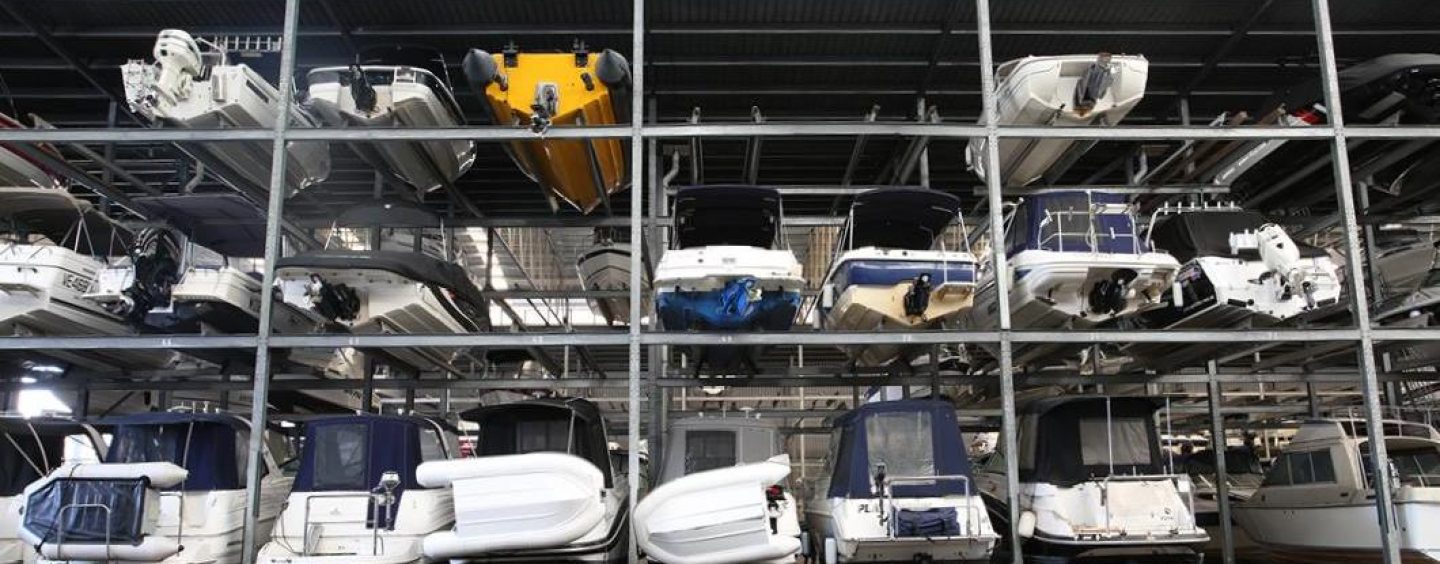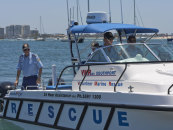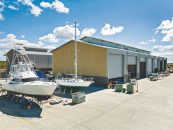Imagine waking up on a Sunday morning and having a home-cooked breakfast with your family, when you all decide that you should spend the day out on the boat. Instead of stressing about dusting off the boat and hooking up the boat trailer, you simply pick up the phone, call the marina and tell them you are on your way. While you pack your day bags and drive a few minutes to the marina in the family sedan, your dry stack marina crew have carefully lifted your boat from its indoor rack and placed it on the water awaiting your arrival.
Such a service sounds expensive. The reality is that it is not, and the long-term comparative savings almost makes the dry stack pay for itself, when compared with the true costs of traditional ownership of a trailerable boat. And it is definitely a more cost-effective way than wet-berthing small to medium boats.
The ever-increasing popularity of dry stacking boats is due to a logical list of advantages, which far outweigh the disadvantages according to dry stack marina users.
Dry stacking is not for everyone’s boat, however. To find out if you should consider dry stacking your boat in one of Queensland’s dry stack marinas, compare your experiences with our guide below.
BENEFITS OF DRY STACK STORAGE
For trailer boat owners, you only have to remind yourself of the last time you tried to launch or retrieve your boat on a public holiday during summer and experienced those ridiculous long waits, to appreciate the benefits of keeping your boat at a dry stack. You would also be reminded that on that particular day, the car park was full so you had to park your car and trailer hundreds of metres away and walk to your boat in the hot sun.
Dry stacking your boat will not only have you avoid the weekend queues and related stress at the boat ramp, it will also keep your family safe from the dangers associated with the boat ramp areas. It is worth noting that a large percentage of insurance claim incidents occur at the boat ramp.
Towing a boat, especially those larger than 25ft, can be a daunting task for some drivers and backseat drivers. Navigating a large load like a boat through traffic and residential areas can increase your chances of a collision.
If you keep your boat dry-stacked, you will not need an expensive 6- or 8-cylinder towing car. There is an obvious fuel saving when you are not towing. You will not even need a boat trailer, so there is an immediate cut on registration, insurance and/or service fees for both these expensive assets. Here’s food for thought: In many cases, cars that do not have towbars fitted have a higher resale value as they are presumed to have not towed heavy loads.
Boat trailers are convenient to have particularly if you always go to places not accessible by water, such as lakes and dams. But if your boat is mostly used in open waters, it may not be as convenient. Boat trailer owners know what it entails to maintain one: the need to grease those bearings before you submerge the trailer in the sea; the need to thoroughly wash the trailer after each use; the maintenance of the electric winches; the replacement of the rollers and the brake lights. The list goes on. All these can be eliminated if you decide to dry stack. Besides, who knows how long the real life span of a boat trailer is? The fact that you don’t necessarily need to buy an expensive trailer also means you can spend more money on a boat or equipment.
Dry stacking is ideal for those living in inner city areas, where property sizes are much smaller, and for people living in apartments. You will not need to store a trailerable boat at your home, which can take up valuable garage or driveway space, leaving you to live with full use and access of your home.
Dry stack marinas practice the best security procedures available. This means your boat will be safe and secure in a well-monitored area. Moreover, when you are out on your boat, your car will be parked within the safety of the marina carpark.
Most boats that are dry stacked have not been antifouled, which is a considerable saving from the annual expense. As the fibreglass hulls are clean of an antifoul, the dry stack boats will be faster in the water and be fuel-efficient. If a hull has not been painted with antifoul, it is an obvious sign that it has not been wet berthed, therefore has not been exposed to the elements and effects of seawater and rain. These boats are generally prized by buyers, and increase the chances of having a higher resale value.
It should be no surprise that an annual dry stack rental will cost less overall, than annual wet berthing of your boat. As a dry stack boat is not submerged in water like a wet-berthed boat, there is less deterioration of the running gear and reduced anode wear, which saves on service and replacement costs of these parts that would be a significant aspect of annual maintenance costs.
Most of the dry stack facilities built in Australia are covered, so the boats are protected from ultraviolet light, rain and bad weather. This increases the life of the hull’s gelcoat, the canvasses and clears, and the overall condition of the boat. By dry stacking, you will spend less time cleaning and polishing, and more time boating.
Ideal for those owners who are involved in a multiple-owner boat arrangements, a syndicate or a boat share, the dry stack logistics make it possible for more than one owner to access the boat at different times without inconveniencing each other.
THE DISADVANTAGES
Your boat may be too big for a dry stack. Most dry stack facilities are built to accommodate boats up to 10 metres and weighing up to 8 tonnes. So for bigger boats, dry stacking is not an option.
Another disadvantage is that there is a possibility that the boat will be scratched or damaged by the forklift. However, the dry stack operators have plenty of chances every day to hone their skills. Safety and precision are key elements of the service they provide, so any damage to your boat is going to be the exception rather than the rule.
Another argument against dry stacking is that boat owners want the flexibility of towing the boat to other parts of the country or launching from a different ramp within the city. Dry stack marina facilities have an answer to that problem. They may also provide a service to store your boat trailer.
Dry stacking is not for everyone. You cannot, for instance, wake up at 4am and decide you are going fishing without pre-booking to have your boat launched the day before so as to be available on the water, as most marinas do not open until 8am and they usually need one-hour notice. Also, in some instances that you leave something behind, jumping onboard to grab something left behind is not going to happen easily, as your boat may be stored 20 feet off the ground. If you want to clean and tidy your boat, it is going to have to be done when the boat is on the water or by arranging with the marina for a temporary cradle on the ground. So being well organised and planning ahead is an important element of successfully dry stacking your boat.
Now that you and your family have finished your day out on the boat, you simply tie the boat off at a designated dry stack berthing area, take your belongings, put your covers on the boat and simply walk away. The marina crew do the rest. Once your boat is lifted out of the water, most dry stack marinas will pull out your bung plugs and wash down the outside of your hull. Just another reason why average-use boats are well suited for a dry stack marina.
By Andy Kancachian






























